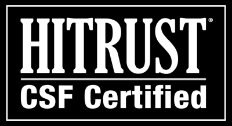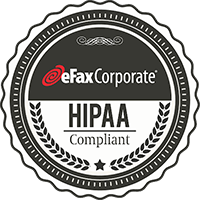The transition to Unified Communications (UC) and Collaboration (UC&C) has been underway for over a decade, and while on-premise voice-over-IP (VoIP) systems have predominated, more and more companies are moving to cloud-hosted Unified Communications as a Service (UCAAS).
But many IT managers are finding out the hard way that not all legacy applications perform well in the new converged digital environment. Fax is one in particular for which there are a number of well-known issues that can cause the formerly reliable method of secure document exchange to break down.
So if legacy analog applications like fax are still in use by your organization, you need to be extra careful because (VoIP) faxing often experiences a high failure rate when running over Voice over Internet Protocol. For companies, especially those in regulated industries such as legal, finance or healthcare, that still need to send or receive faxes on a regular basis, this can be a real problem. If your users fall into that category, you can bet that they will give you an earful when their always-important faxes don’t go through.
That is why many UC service providers actually recommend placing critical fax applications on plain old telephone lines (an extra expense), since faxing is known to be problematic on IP networks. However, maintaining legacy phone lines adds to the cost and negates one key benefit of UC, which was to get rid of monthly telephone charges!
In an enterprise’s migration of voice and data services into an IP-based environment, why would fax be so hard to integrate? Are there really problems that are unique to fax technology?
Yes, in fact there are so many variables that it can be difficult and time consuming to troubleshoot if the problem is even on your network or elsewhere. So here is brief technical discussion of what can go wrong with Fax over VoIP and why, from noted communications expert William Flannagan, author of VoIP and Unified Communications.
Why is fax so hard to migrate to Voice over IP?
The problems arise primarily in devices that have a built-in analog modem, like credit card readers, alarm systems, medical monitoring equipment and of course, fax machines. Modems use sounds to convey information, but the complexity of the sounds requires a very good audio connection.
The primary fax standard, T.30, was designed to operate when the only connections available were dial-up calls placed on the public switched telephone network (PSTN) which offered a dedicated channel with fixed bandwidth from sender to receiver. It had constant latency with no jitter and seldom any loss. It was a very solid connection. The public voice network also had a common clock so there was no loss of synchronization, which is very important for fax machines as we shall see.
Fax machines were designed to take advantage of that; they communicate back and forth with messages and tones that are necessarily transmitted as high-quality voice that can’t be compressed. On public networks like the Internet, fax will experience problems due to the nature of packet switching – latency, jitter, dropped packets, and compression applied to what the network thinks is a voice channel but it is really fax, which makes it nearly impossible for the packets to pass through unharmed.
So all of those problems impact fax but not voice, because the receiving fax machine can’t say…huh? Can you repeat that? It may just hang up. Even the loss of one packet can show up as a streak or missing line or even cause the connection to drop.
Are there any other technical issues?
Yes, there are problems with SIP (session initiation protocol) that is used to set up and manage VoIP calls. A lot of fax calls start out as regular voice calls. SIP controllers send invitations when one wants to set up a call with another. When the two SIP devices realize that the call is in fact for fax, not voice, there will be a re-invitation sent…to re-initiate the connection from voice to fax. But if this re-invite is delayed, even by a little bit, it can arrive too late and when the network tries to switch over to fax, machines can get out of synch and drop the call.
There is also a problem with long faxes of more than a few pages – think of 25 or 50 page documents (common in legal or healthcare). Remember that the PSTN was supplied with a single clock source, so the sending fax machine was synchronized in time with the receiving fax machine and both ran at the same rate. But these days with the Internet in between, the time or rate of the two fax machines will be a little bit different and if they run long enough, it is practically guaranteed that the buffers somewhere along the line will overflow and packets will be lost, and that will drop the connection.
What about T.38 protocol for Fax over IP (FoIP)?
T.38 is a protocol that operates between gateways over an IP connection. T.38 gateways hide the IP network from the fax machines at each end, so they think they are talking over the PSTN. T.38 can cover up a lot of the synchronization issues and will preserve the connection for long faxes. But there are still problems. Many carriers never implemented T.38, and with millions of fax machines that support only T.30, a FoIP solution would need to transcode the data from T.30 to T.38, and then back to T.30, before it reaches the receiving fax machine. So problems can still arise when fax data passes between different networks that do not support the same protocols.
For example, we have seen cases where the T.38 gateway tells the sending fax machine that the fax was received, but is not able to deliver the fax to the machine at the far end. So the sender shows a successful transmission in its logs, even though it wasn’t received.
Finally, are there any best practices or tips you can share for those who are either planning or have made the transition to VoIP?
It depends on the type of network they have, but if the company needs to communicate with the outside world and faxes will be running over the uncontrolled Internet, especially internationally where voice channels are almost always compressed, that is more problematic and my recommendation would be an online cloud fax service and I have even adapted one of those services for my own use.
——————————————————————–
eFax Corporate® offers a cloud-based solution specifically designed to send and receive fax efficiently as secure email attachments regardless of the underlying network technology. eFax Corporate has been delivering cloud fax solutions for over 23 years to help tens of thousands of enterprise clients, including nearly half of the Fortune 500, fax securely and with greater reliability than any other business-class provider.For more information about eFax Corporate, please visit our resources page, or request a quote, or call 888-575-7958.











